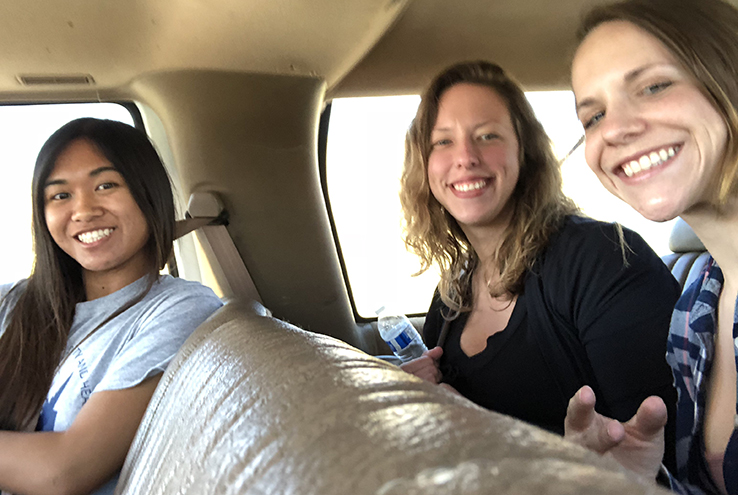Microbiology Students Experience Bioluminescence
Publish Date: April 25, 2018

Christopher Olivera looks for ways to show his students that science is not boring. So when he learned a bioluminescence phenomenon was occurring in Big Sur along the central California coast, the Crafton Hills College instructor of microbiology asked his students: “Why don’t we go and look at it, and found out why it’s happening?”
And they did.
The turnaround trip took place Feb. 17-18 when Olivera and students Alexandra Rapper, Robert Norbrhyn, Emily Wood and Liza Ramilo headed up the coast to conduct research and bring samples of the water affected back to CHC.
“We had to be quick with the planning because the event was happening then and there,” Olivera said by phone last week.
National Geographic describes a bioluminescence as a “naturally luminescent phenomenon” caused by a phytoplankton bloom, which NSA defines as “plant-like organisms that are important for carbon cycling” but “could also influence clouds and climate.” The organisms - known as dinoflagellates - flash light in response to a predator approaching its area, like tiny shrimp, said Olivera.
The group arrived at Pfeiffer State Beach before dark on Feb. 17. Olivera said the arrival time gave them enough leeway to set up necessary material to capture the phenomenon on camera and collect samples of the affected waters and headed back to camp because to “truly witness” the bioluminescence first-hand, you had to be “quite far away from it,” he explained.
“Unfortunately, it was very, very hazy that evening. So, it made it difficult to track,” Olivera continued. “But for my students, I can tell you they had a blast. They were jumping for joy to do something hands-on.”
Samples brought back to Crafton are currently growing in the microbiology department’s lab. The idea is to not only characterize these microorganisms, but also better understand the effects climate change has on our oceans, Olivera said.
Moving forward, Olivera hopes the success of this trip will open the doors for more hands-on learning opportunities outside of the classroom, but it all has to do with timing and funding.
“My goal is to encourage the idea that science is not boring,” he said, “because it serves a purpose in making the world a better place.”



